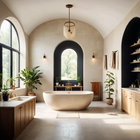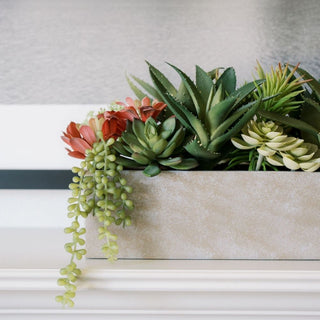Faux plants are a fantastic way to bring greenery into your space without the hassle of watering, pruning, or worrying about sunlight. However, decorating with faux plants isn’t always as simple as it seems. To ensure your artificial greenery looks its best, here are seven common mistakes to avoid.

1. Choosing Unrealistic-Looking Plants
One of the biggest mistakes people make is opting for faux plants that don’t look realistic. Low-quality materials, unnatural colors, or poorly designed foliage can make your plants look fake at first glance. To avoid this, invest in high-quality faux plants like those from CG Hunter. Look for plants with varied textures, subtle color variations, and natural-looking shapes.
2. Neglecting to Clean and Maintain
Faux plants don’t need watering, but they do need occasional cleaning to stay looking fresh. Dust and dirt can accumulate on the leaves, making them look dull and lifeless. Regularly dust your faux plants with a soft cloth or feather duster, and spot clean with a damp cloth as needed. This simple maintenance step can make a big difference in their appearance.
3. Overcrowding Your Space
While it’s tempting to fill your home with greenery, overcrowding with too many faux plants can create a cluttered, unnatural look. Instead, strategically place a few key plants around your space. Consider varying the sizes and types of plants to create visual interest without overwhelming the room.

4. Ignoring Scale and Proportion
Choosing the wrong size plant for your space is a common mistake. A tiny plant on a large table or a huge tree in a small corner can throw off the balance of the room. When decorating, always consider the scale and proportion of your plants. For example, CG Hunter’s Slim Olive trees are perfect for narrow spaces, while their Drop-in Pot Trees are ideal for making a statement in larger rooms.
5. Placing Faux Plants in Perfect Symmetry
Natural plants grow in all sorts of shapes and directions, so placing your faux plants in perfectly symmetrical arrangements can make them look artificial. Avoid rigid placements and try to replicate the random, natural growth patterns of real plants. Experiment with angles, stagger heights, and mix different types of foliage to create a more organic look.
6. Forgetting to Complement with Natural Elements
Faux plants can sometimes appear static or lifeless without the right context. To enhance their realism, pair them with natural elements like wood, stone, or woven textures. For instance, placing a faux fern in a rustic wooden planter or adding natural stones around the base of a faux tree can make your display feel more authentic.

7. Using Faux Plants Outdoors Without Caution
While many faux plants can be used outdoors, not all are designed to withstand the elements. Exposing indoor faux plants to sun, rain, or extreme temperatures can lead to fading, warping, or damage. If you’re decorating an outdoor space, choose faux plants that are specifically designed for outdoor use, like CG Hunter’s durable outdoor products.
Decorating with faux plants is an art that requires thoughtful consideration. By avoiding these common mistakes, you can create a beautiful, natural-looking space that brings the calming presence of greenery into your home—without the fuss.
Not done? Look at another take below:










